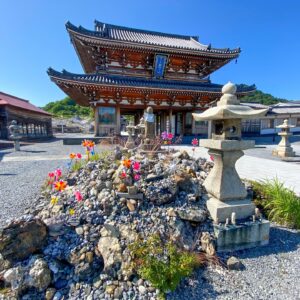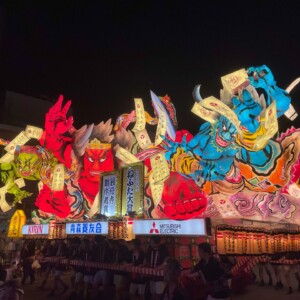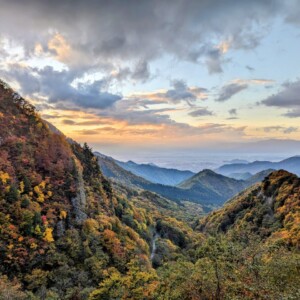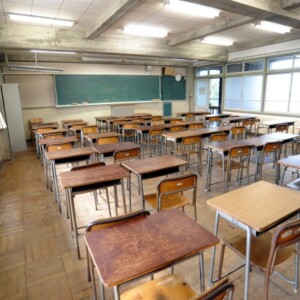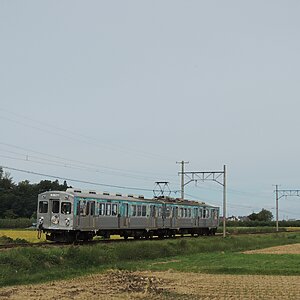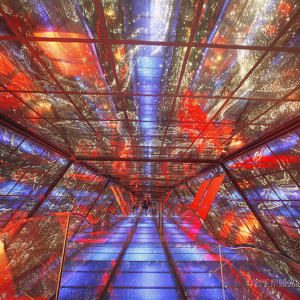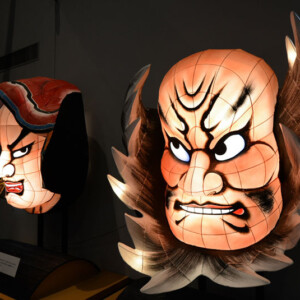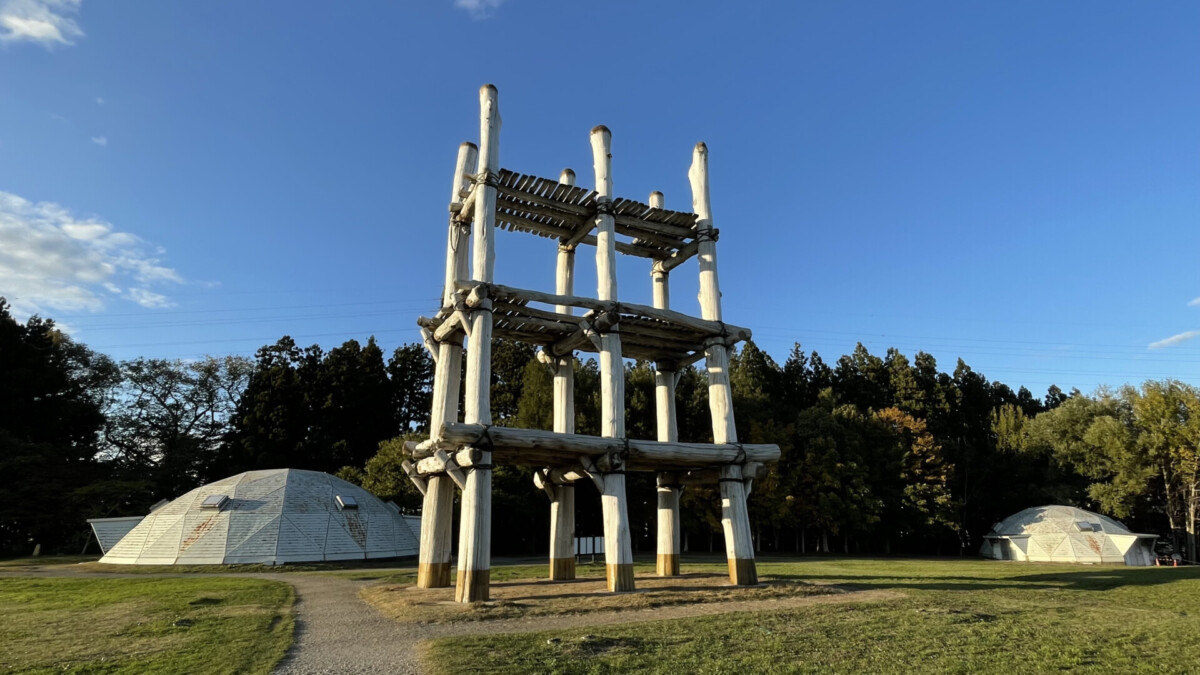
Sannai Maruyama Ruins is Japan's largest Jomon Ruins located in the northernmost part of Honshu [Aomori Prefecture]
table of contents
Sannai Maruyama Ruins (Sannai Maruyama Ruins) is an ancient ruin located in Oaza Sannai Maruyama, Aomori City, Aomori Prefecture. These are the remains of a large-scale village that is thought to have existed for many years.
Japan's largest ancient ruins
The Sannai Maruyama ruins are located on a hill on the banks of the Okitate River, and are thought to have been surrounded by a well-maintained deciduous broad-leaved forest of chestnuts and walnuts at the time.
With a total area of approximately 35 hectares, it was designated as a national special historic site in 1997 as it is one of the largest large-scale village ruins in Japan, and in 2021 it was designated as the Oyu Ring Together with the stone rows, it has been registered as a World Cultural Heritage Site as part of the "Jomon Ruins in Hokkaido and Northern Tohoku."
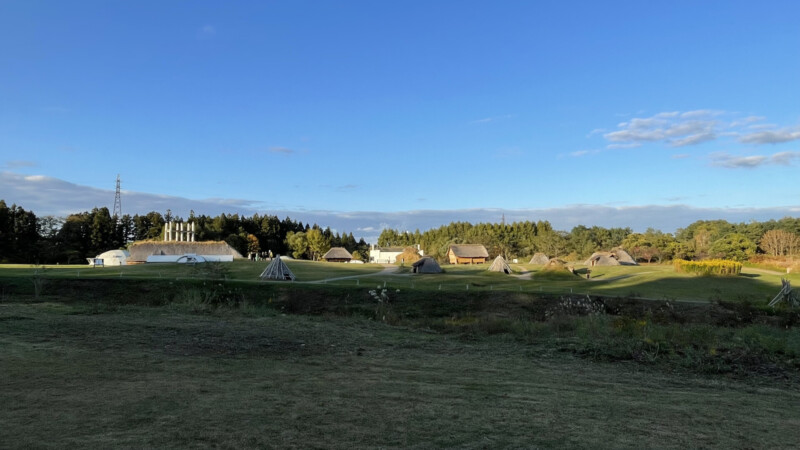
It has been known since the Edo period that there are ruins at this location, and the Eiroku Nikki, which records various circumstances of the Hirosaki domain, records that a large number of clay figurines were excavated, and there are also ruins in the Tohoku region and other areas. Masumi Sugae, who was touring the countries around Japan, also wrote about the excavation of clay figurines in his travelogue.
In the Showa era, Aomori Prefecture began planning to build a prefectural baseball field at this location, and a survey was conducted to find buried cultural properties in advance. As a result, it became clear that the site was the remains of a large-scale settlement from the Jomon period, so the construction plan was canceled and a decision was made to preserve and utilize the site.
At the Sannai-Maruyama ruins, remains of large-scale dug-up pillar buildings, pit-style dwellings, raised-floor warehouses, storage pits, and earthen pit graves from the Jomon period have been found, all of which were connected by roads and constructed in a well-planned manner. It appears that it was placed in .
A large amount of excavated items including pottery and stone tools
A large amount of artifacts, mainly earthenware and stone tools, were excavated from the ruins, and it is said that the number of artifacts was tens of thousands of cardboard boxes.
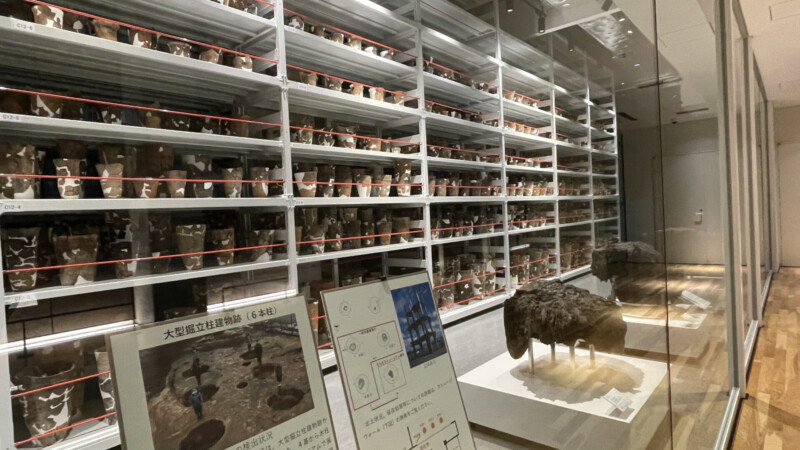
Other unearthed items include clay products such as Japan's largest plate-shaped clay figurine, minerals such as obsidian and amber that are presumed to have been obtained through trade, lacquerware, and processed and decorative items such as large jade beads.
Numerous restored buildings
Inside the Sannai Maruyama ruins, you can see a number of restored buildings that recreate the appearance of the time based on the traces that have been discovered.
Six pillar building ruins
The remains of a building built by digging a hole in the ground and building pillars. The chestnut wood pillar remained unrotted when it was discovered because an embalming treatment had been applied to scorch the area around the wooden pillar and the bottom.
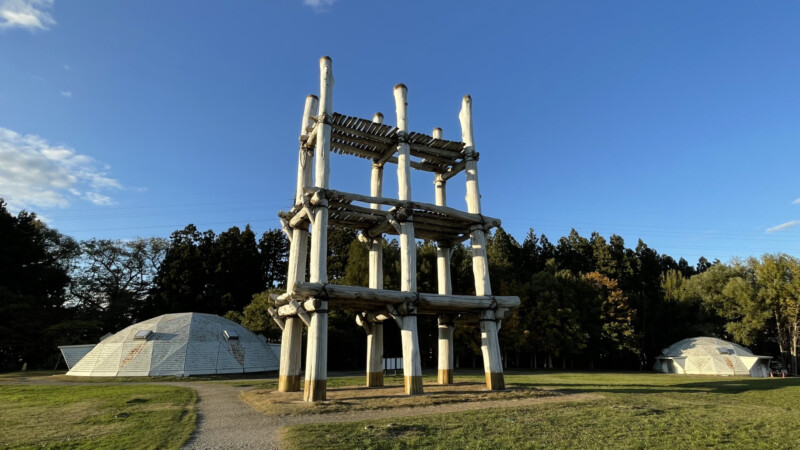
It is considered the most important structure among the remains discovered at the Sannai Maruyama ruins , and the spacing, width, and depth of precisely placed post holes are all standardized at 4.2 m, 2 m, and 2 m, respectively.
This shows that surveying technology already existed at that time, and is considered evidence that the residents of the village had advanced technology.
On the other hand, the question of what this building was used for remains shrouded in mystery, and although it has been restored to its current form through historical research by the restoration project team at the time, it remains unclear whether this building is correct. ?'' It seems like they don't know.
Large pit building ruins
Dwellings with a length of 10 meters or more are defined as large-scale dwellings, and at the Sannai-Maruyama Ruins, the largest dwelling was found to be approximately 32 meters long and 10 meters wide.
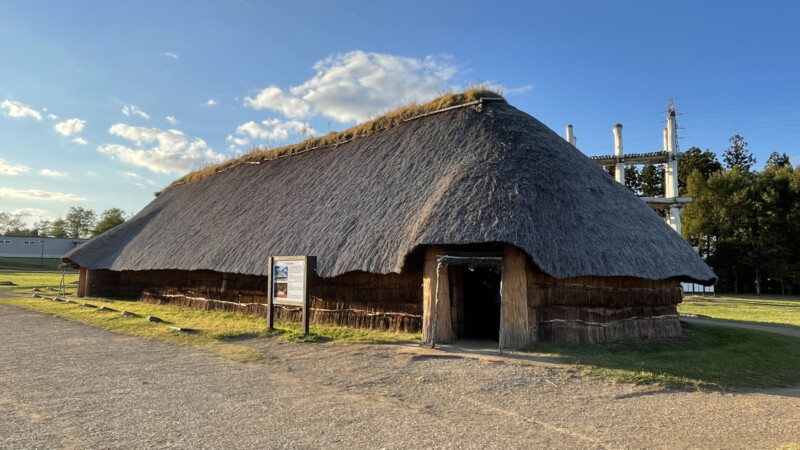
They are often found near the center of the village, and are thought to have been places where residents gathered for some reason, such as meeting halls, communal workshops, or housing complexes.
Pit building ruins
This is a reconstruction of a typical residential building from the time, and each building has been envisioned and reconstructed with three types of roofs: thatched, bark, and earthen roofs.

It is believed that this village has existed for over a thousand years, so the shape of the dwellings including the roof, the arrangement of pillars, and the location and structure of the hearths are thought to have changed over time.
Remains of a dug-out pillar building (remains of a raised warehouse)
In the center of the village, on the west side of the southern embankment, a cluster of postholes that are assumed to belong to a dug-out pillar building were excavated in a dense form, but since no traces of habitation could be confirmed from the surrounding area, this dug-up pillar building was It has been determined that it was most likely a raised-floor building or a warehouse, and has been restored.

It is thought that postholes were dug in the ground and pillars were erected to support the roof.
summary
Various other remains have been discovered at the Sannai-Maruyama ruins, including earthen pit graves, road ruins, storage pits, and garbage dumps from that time.
The Jomon Jiyukan, which is located at the entrance of the facility, has a museum where you can see various excavated items on display and information about the ruins, as well as a large theater, an experience workshop, a restaurant, and a souvenir shop.It is one of Aomori Prefecture's leading tourist facilities. It is also popular as
Sannai Maruyama Ruins <Information>
- Name: Special Historic Site Sannai Maruyama Ruins
- Address: 305 Sannai Maruyama, Aomori City, Aomori Prefecture, 038-0031
- Phone number: 0177-66-8282
- Official URL: https://sannaimaruyama.pref.aomori.jp/





![[JR East Pass Trip: Day 3] A day trip to Aomori Bullet Tour to foster your energy at home! Tsugaru Kokeshi at Shin-Aomori Station](https://jp.neft.asia/wp-content/uploads/2022/12/IMG_3878-1200x675-1-150x150.jpg)

![[Aomori Prefecture] Let's go on a journey to see clay figures! Introducing highlights and spots! doguu1](https://jp.neft.asia/wp-content/uploads/2023/02/doguu1-150x150.jpg)

![[Series 1: The role of the previous nine years and the role of the later three years] Why did the Ou War at the end of the Heian period take place? Shiba Castle Ancient Park](https://jp.neft.asia/wp-content/uploads/2023/11/6e4e9113cd864c9d5892db200df1ec1c-150x150.jpg)
![[Series ②: The role of the previous nine years and the role of the second three years] The role of the previous nine years is from the truce to the battle again, and the Kokufu army is struggling Taga Castle Ruins](https://jp.neft.asia/wp-content/uploads/2023/11/a0b8b1213124e7a13c7308fa81e053a2-150x150.jpg)
![[Series ③: The role of the previous nine years and the role of the second three years] Abe's army, which boasts unparalleled strength, is forced into a predicament by Minamoto no Yoriyoshi Minamoto Yoshiie](https://jp.neft.asia/wp-content/uploads/2023/11/134a54642694b5a7a2440647a33b73be-150x150.jpg)
![[Series ④: The role of the previous nine years and the role of the second three years] Mr. Kiyohara's participation in the war completely changed the flow of the role of the previous nine years 1000310_m](https://jp.neft.asia/wp-content/uploads/2023/11/1000310_m-150x150.jpg)

